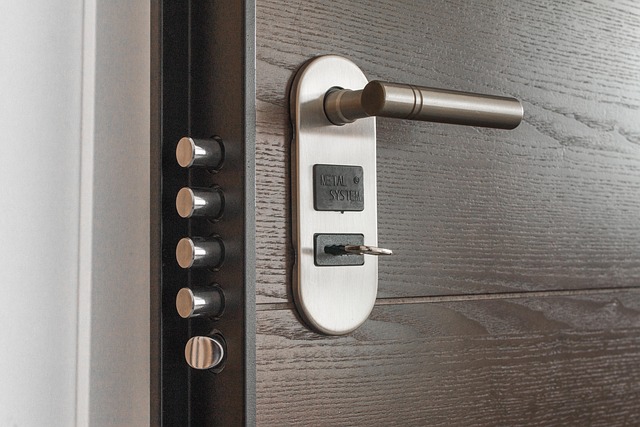Solar-powered security systems are gaining popularity as eco-conscious homeowners seek sustainable protection solutions. These innovative systems utilize solar energy, eliminating grid dependency and reducing carbon footprints. With advanced sensors, cameras, and motion detectors, they offer 24/7 monitoring, threat detection, and remote access, providing unparalleled peace of mind. The market is witnessing rapid growth driven by environmental awareness and technological advancements, aiming to overcome integration challenges and limited sunshine to make these systems more accessible for modern homes.
“Discover the future of home security with innovative solar-powered security systems. As we navigate an increasingly digital world, integrating solar technology into our safety measures offers a sustainable and efficient approach. This article explores the rise of these systems, delving into their key components, benefits for modern homes, and real-world applications. We’ll also analyze future prospects and challenges, providing insights into how solar-powered security systems could shape the homes of tomorrow.”
- Understanding the Rise of Solar-Powered Security Systems
- Components of Modern Solar Security Technology
- Benefits and Applications in Home Security
- Future Prospects and Challenges for Solar Security Solutions
Understanding the Rise of Solar-Powered Security Systems

In recent years, there’s been a significant shift towards adopting eco-friendly and sustainable energy solutions for homes, and this trend has directly influenced the development of solar-powered security systems. As consumers become more environmentally conscious, they seek ways to reduce their carbon footprint while ensuring the safety and protection of their properties. Solar-powered security systems offer an ideal fusion of these two key aspects: sustainability and security.
The allure of these systems lies in their independence from traditional power grids. By harnessing solar energy, they provide a reliable and long-lasting solution, free from fluctuating electricity costs or the need for frequent maintenance. This technology is particularly appealing to modern homeowners who value both convenience and environmental responsibility. With advanced sensors, cameras, and automated alert systems, solar-powered security has revolutionized home protection, making it more accessible and efficient than ever before.
Components of Modern Solar Security Technology

Modern solar-powered security systems are transforming home protection, offering a sustainable and intelligent approach to safety. These systems typically consist of several key components working in harmony. At the core is a network of solar panels designed to harness renewable energy from the sun, ensuring a reliable power source for the entire operation. These panels can be strategically placed on rooftops or other visible areas, integrating seamlessly with the home’s aesthetics while providing power for various security devices.
Advanced sensors and cameras form another vital part, capable of detecting motion, intrusion, or unusual activities. Solar-powered motion detectors and CCTV cameras are becoming increasingly sophisticated, equipped with night vision capabilities and advanced analytics to differentiate between people, animals, and potential threats. When activated, these systems trigger alerts sent directly to homeowners’ devices, allowing for prompt response and remote monitoring.
Benefits and Applications in Home Security

Solar-powered security systems are transforming home protection by offering a sustainable and intelligent approach to safety. One of the key benefits is their environmental friendliness; unlike traditional power-hungry systems, these solar solutions harness renewable energy from the sun, reducing carbon footprints and electricity bills for homeowners. This technology is particularly advantageous in remote or rural areas with limited access to grid electricity, providing an off-grid security solution.
The applications of solar-powered security are diverse. Homeowners can install solar cameras that capture high-resolution footage, enabling 24/7 monitoring of their properties. Motion sensors powered by the sun’s energy detect any unusual activities and trigger alerts, allowing for quick responses to potential threats. Moreover, these systems can integrate with existing home automation setups, giving owners remote access and control over their security from anywhere, at any time.
Future Prospects and Challenges for Solar Security Solutions

The future of solar-powered security systems appears promising, with continuous advancements in technology driving innovation. As concerns over energy costs and environmental impact grow, homeowners are increasingly embracing sustainable solutions. Solar-energy-driven security equipment offers a compelling alternative to traditional power sources, leveraging the abundance of sunlight for enhanced protection. With improved efficiency, reduced carbon footprint, and potentially lower operational costs, these systems are poised to become mainstream.
However, challenges remain. Integrating solar-powered security into existing home infrastructure requires careful planning and compatibility checks. Additionally, reliance on sunlight can limit their effectiveness in regions with limited sunshine or during periods of cloud cover. Storage solutions, such as batteries, play a crucial role in overcoming this challenge, but they add to the initial cost and maintenance overhead. Addressing these issues will be key to unlocking the full potential of solar-powered security systems and ensuring their widespread adoption in modern homes.
Solar-powered security systems are revolutionizing home protection, offering an eco-friendly and cost-effective solution. By leveraging renewable energy, these innovative technologies provide enhanced safety features and peace of mind for modern homes. With ongoing advancements, the future looks bright for solar security, addressing challenges while expanding applications globally. Embracing this green approach to home defense is not only beneficial for individuals but also contributes to a sustainable and safer community.
